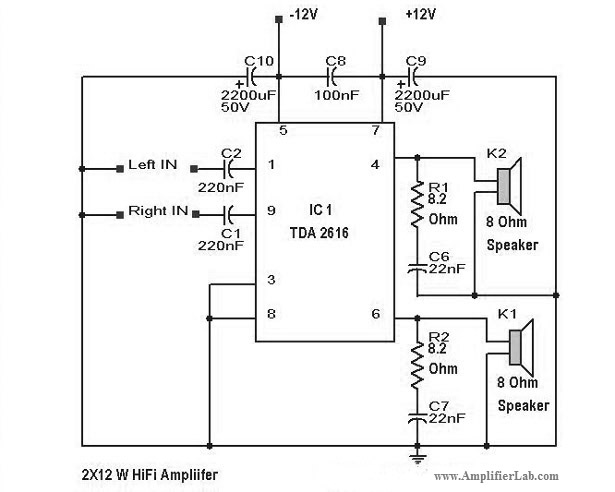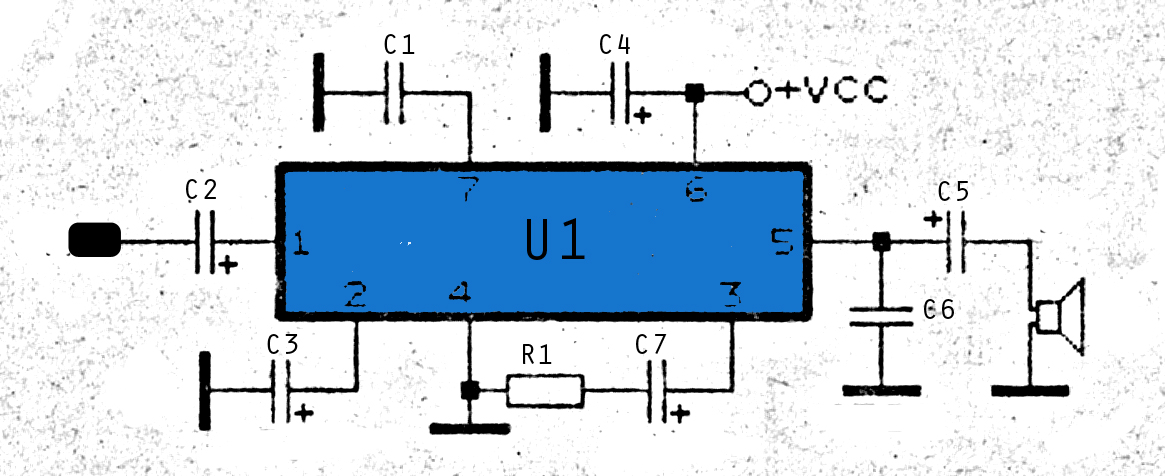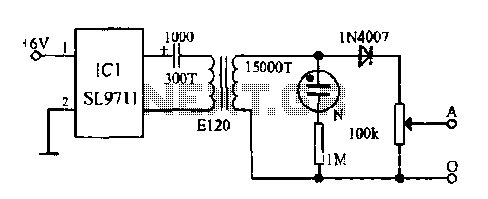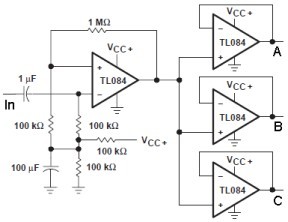
Power amplifier electronic circuits-tube audio rf amplifiers

Various types of amplifiers include power amplifiers, audio amplifiers, tube amplifiers, stereo amplifiers, sensor amplifiers, RF amplifiers, sound amplifiers, and video amplifiers.
Amplifiers are critical components in electronic circuits, serving to increase the amplitude of signals. Each type of amplifier is designed for specific applications, characterized by their unique properties and functionalities.
Power amplifiers are used to drive loads, such as speakers in audio systems, providing the necessary power to produce sound at higher volumes without distortion. They are commonly found in home audio systems and public address systems.
Audio amplifiers enhance audio signals and are pivotal in devices such as televisions, radios, and music players. They ensure that the sound is clear and powerful enough to be heard in various environments.
Tube amplifiers, also known as valve amplifiers, utilize vacuum tubes to amplify audio signals. They are favored by audiophiles for their warm sound quality and are often used in high-fidelity audio systems.
Stereo amplifiers are designed to process two channels of audio, providing a richer sound experience. They are essential in home theater systems, ensuring that audio playback is balanced and immersive.
Sensor amplifiers are specialized circuits that amplify low-level signals from sensors, such as temperature or pressure sensors, enabling accurate data acquisition and processing.
RF amplifiers are used in radio frequency applications, amplifying signals in communication devices, such as radios and televisions, to ensure clear transmission and reception.
Sound amplifiers are typically used in hearing aids, enhancing sounds for individuals with hearing impairments, while video amplifiers boost video signals in applications like televisions and projectors, ensuring high-quality image transmission.
Each amplifier type is designed with specific circuit configurations and components, such as transistors, operational amplifiers, and passive elements, tailored to meet the requirements of their respective applications. Understanding the characteristics and uses of these amplifiers is essential for designing effective electronic systems.Various types of amplifiers like power amplifiers, audio amplifiers, tube and stereo amplifiers, sensor amplifiers, rf amplifiers, sound amplifiers, video amplifiers etc. 🔗 External reference
Amplifiers are critical components in electronic circuits, serving to increase the amplitude of signals. Each type of amplifier is designed for specific applications, characterized by their unique properties and functionalities.
Power amplifiers are used to drive loads, such as speakers in audio systems, providing the necessary power to produce sound at higher volumes without distortion. They are commonly found in home audio systems and public address systems.
Audio amplifiers enhance audio signals and are pivotal in devices such as televisions, radios, and music players. They ensure that the sound is clear and powerful enough to be heard in various environments.
Tube amplifiers, also known as valve amplifiers, utilize vacuum tubes to amplify audio signals. They are favored by audiophiles for their warm sound quality and are often used in high-fidelity audio systems.
Stereo amplifiers are designed to process two channels of audio, providing a richer sound experience. They are essential in home theater systems, ensuring that audio playback is balanced and immersive.
Sensor amplifiers are specialized circuits that amplify low-level signals from sensors, such as temperature or pressure sensors, enabling accurate data acquisition and processing.
RF amplifiers are used in radio frequency applications, amplifying signals in communication devices, such as radios and televisions, to ensure clear transmission and reception.
Sound amplifiers are typically used in hearing aids, enhancing sounds for individuals with hearing impairments, while video amplifiers boost video signals in applications like televisions and projectors, ensuring high-quality image transmission.
Each amplifier type is designed with specific circuit configurations and components, such as transistors, operational amplifiers, and passive elements, tailored to meet the requirements of their respective applications. Understanding the characteristics and uses of these amplifiers is essential for designing effective electronic systems.Various types of amplifiers like power amplifiers, audio amplifiers, tube and stereo amplifiers, sensor amplifiers, rf amplifiers, sound amplifiers, video amplifiers etc. 🔗 External reference





